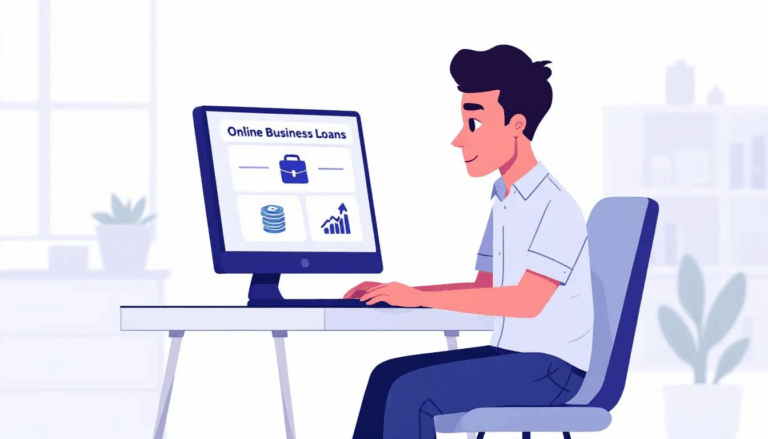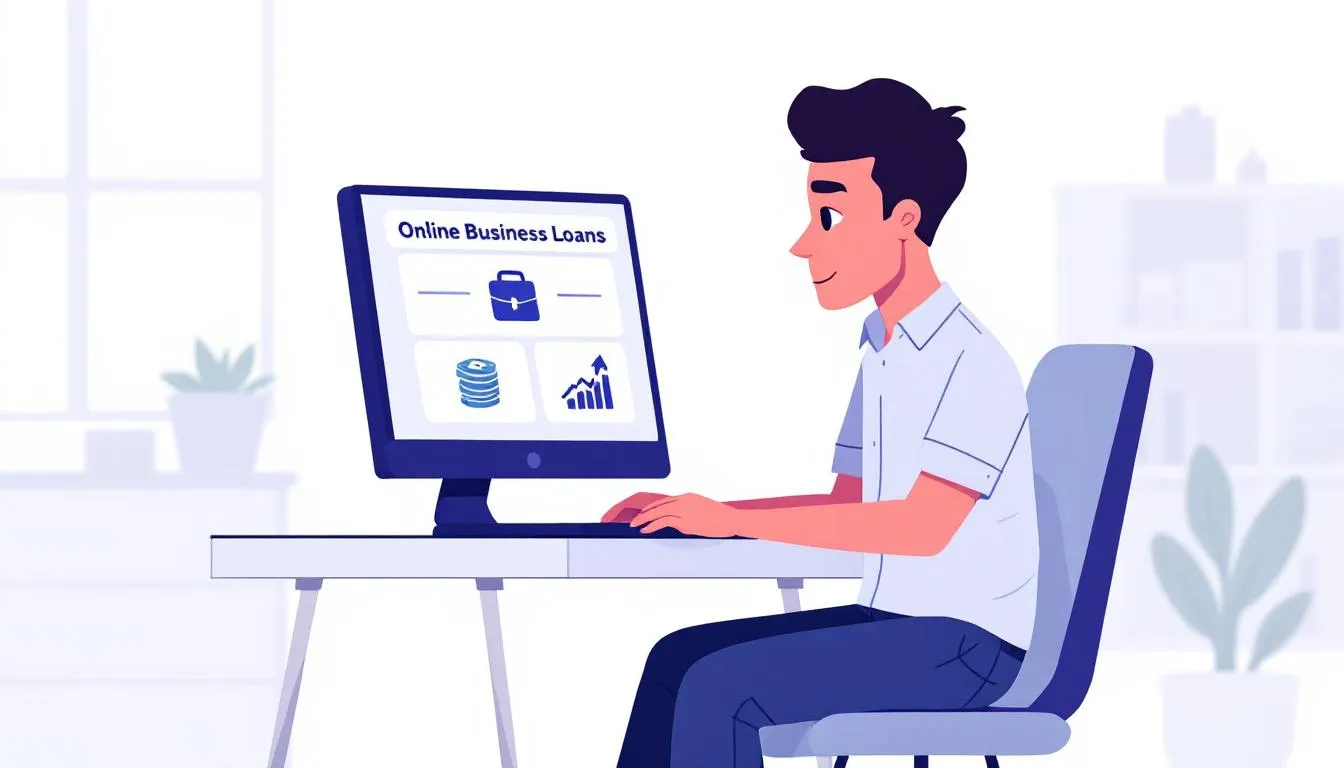What are the Average Small Business Loan Amounts by State?
Small business loan amounts differ across states due to local economic conditions and industry trends. It also varies significantly by lender and loan type.
While those fluctuations make it difficult to calculate state averages, we can use SBA loans as a benchmark. SBA lending programs play a pivotal role in determining the average loan sizes for small businesses, influencing the overall landscape of small business lending.
Here are the average SBA loan amounts by state from highest to lowest.
- California: $901k.
- Georgia: $875k.
- Louisiana: $852k.
- Texas: $832k.
- Arizona: $801k.
- North Carolina: $780k.
- Alaska: $762k.
- Colorado: $748k.
- Alabama: $712k.
- Washington: $704k.
- Tennessee: $698k.
- Utah: $691k.
- Florida: $672k.
- South Carolina: $668k.
- Wisconsin: $635k.
- Illinois: $663k
- Nevada: $622k.
- Montana: $614k.
- Virginia: $609k.
- New Mexico: $592k.
- Arkansas: $590k.
- Oklahoma: $579k.
- Idaho: $565k.
- Washington, DC: $555k.
- Oregon: $554k.
- South Dakota: $539k.
- North Dakota: $532k.
- New Jersey: $526k.
- Nebraska: $519k.
- Pennsylvania: $512k.
- Minnesota: $508k.
- New York: $500k.
- Missouri: $500k.
- Kansas: $496k
- Wyoming: $495k.
- Iowa: $491k.
- Kentucky: $490k.
- Rhode Island: $489k.
- Indiana: $471k.
- Maryland: $470k.
- Michigan: $434k.
- Mississippi: $$422k.
- Maine: $413k.
- Connecticut: $399k.
- Massachusetts: $391k.
- West Virginia: $369k.
- Delaware: $360k.
- New Hampshire: $356k.
- Hawaii: $334k.
- Vermont: $330k.
- Ohio: $306k.
Why do Loan Amounts by State vary?
Small business loans vary significantly by state due to a variety of factors. One of the main reasons for this variation is the economic conditions of each state.
States with a strong and thriving economy may have more financial institutions willing to lend to small businesses, leading to higher loan amounts. On the other hand, states with struggling economies may have fewer lending options available, resulting in lower loan amounts for small businesses.
Additionally, the cost of living and business operation expenses can differ significantly from state to state, impacting small businesses’ funding. Furthermore, state regulations and policies regarding lending and business operations can also play a role in the variation of loan amounts. These factors, among others, contribute to the significant differences in small business loan amounts by state.
Variance by Industry
Small business loan amounts also fluctuate based on the industry. Understanding these variations is crucial for small business owners.
The average loan size differs across various sectors. Industries such as healthcare and construction may have different average loan amounts compared to retail or technology.
Industry-specific lending trends play a vital role in accessing capital for small businesses. Knowing these trends helps entrepreneurs make informed decisions about their financing options.
Loan Types
Loan amounts can vary widely depending on the type of financing you choose. Each business loan type is designed for a specific purpose, term length, and risk level, which impacts how much funding you may qualify for. From flexible credit lines to fixed-term financing, here’s how the most common small business loans compare:
Business Term Loans: A business term loan provides a lump sum of capital repaid over a fixed period through monthly payments. A long-term loan is typically used for significant investments like expansion or equipment purchases, while an unsecured term loan may be better suited for shorter-term needs. Short-term loans can range from $5,000 to $750,000. Business term loans through our lender network have a range of $10k – $5 million.
Business Lines of Credit: A business line of credit offers flexible access to capital that can be drawn as needed. Business lines of credit typically have credit limits that range from $250,000 to $500,000, but some lenders offer limits as high as $1 million. An unsecured business line is ideal for covering working capital gaps, managing seasonal cash flow, or funding unexpected costs. Lines of credit through our lender network have a range of $1k – $1 million.
Bad Credit Business Loans: Designed for borrowers with less-than-perfect credit, bad credit business loans provide access to funding when traditional financing isn’t an option. These loans may have higher interest or factor rates, and funding amounts are generally smaller. Some options include merchant cash advances, invoice factoring, and revenue-based financing. Bad credit business loans through our lender network have a range of $1k – $5 million.
Equipment Financing: Equipment financing helps businesses purchase machinery or vehicles needed to operate. Loans are typically backed by the equipment itself, which serves as collateral. Because of this structure, equipment financing often comes with competitive interest rates and flexible terms. Equipment financing solutions through our lender network offer maximum loan amounts of up to $5 million per piece of equipment.
SBA Loans: Loans from the Small Business Administration (SBA) are partially guaranteed by the government, reducing risk for lenders. SBA loans are known for their competitive rates, longer loan terms, and high loan amounts, sometimes up to $5 million. Loans backed by the SBA are often used for major investments, acquisitions, or refinancing.
Merchant Cash Advances (MCAs): MCAs provide a lump sum in exchange for a percentage of future credit card or daily sales. These are not technically loans, so they use factor rates instead of an APR (annual percentage rate). The amount you qualify for is based on your revenue, not credit score, making it a common option for businesses with bad credit. MCAs through our lender network offer advance amounts between $5k – $1 million.
Working Capital Loans: Working capital loans are typically short-term loans that help cover everyday operational expenses like payroll, rent, and inventory. They can be structured as a long-term loan, unsecured line, or even a revenue-based funding product, depending on how your business operates. Working capital loans through our lender network have a range of $1k – $5 million.
Accounts Receivable Factoring: Also known as invoice factoring, this financing option allows businesses to sell outstanding invoices to a third party at a discount in exchange for immediate cash. It’s a popular solution when clients take weeks or months to pay. It’s closely related to invoice financing, where you borrow against unpaid invoices instead of selling them. Accounts receivable factoring through our funder network provides a range of $10k – $10 million.
Revenue Based Funding: With revenue based funding, businesses receive capital upfront and repay it as a percentage of future revenue. This option is fast and flexible, especially for companies with strong sales but limited assets or credit. Factor rates and repayment frequency vary by lender. Funders in our network offer a range of $5k – $5 million for revenue based financing.
What lenders offer the highest Loan Amounts?
Loan amounts at individual lenders can vary significantly. Some lenders offer seven-figure small business loans, while others might cap out at $50,000.
Here are the types of lenders to consider when looking for high borrowing amounts for your small business loan.
SBA-Approved Lenders
SBA-approved lenders refer to financial institutions that are approved to offer loans through the Small Business Administration (SBA) program. SBA lenders typically provide small business loan amounts ranging from $50,000 to $5 million, with the average loan size being around $375,000.
These loans are designed to provide financial assistance to small businesses for various purposes such as working capital, equipment purchases, real estate acquisition, and more. SBA loans are known for their favorable terms, including low interest rates and longer repayment periods, making them an attractive option for small business owners needing funding.
Many consider SBA loans the gold standard of small business financing. Additionally, SBA lenders often have more flexible eligibility requirements compared to traditional banks, making it easier for small businesses to qualify for a loan. Traditional or alternative lenders can be approved to offer SBA loans.
Large Commercial Banks
Small business loan amounts from large commercial banks can vary widely. Traditional banks typically lend amounts ranging from $10,000 to $5 million. The average small-business loan amount made by commercial banks in the U.S. is $663,000.
However, getting approved for a small business loan from a large commercial bank can be incredibly difficult for small businesses. These banks often have strict lending criteria, requiring a solid credit history, significant collateral, a down payment, and a proven track record of profitability. Meeting these criteria can be a considerable challenge for many small businesses, especially startups or industries with higher risk.
In addition, many commercial banks focus on medium- and enterprise-level companies. As a result, many small businesses turn to alternative or SBA-approved lenders for more flexible lending options.
Local Banks & Credit Unions
Small business loan amounts at local banks and credit unions can vary, but they often offer lower loan amounts than large commercial bank loans. These smaller financial institutions may have stricter eligibility requirements similar to commercial banks, requiring businesses to have a strong credit history, a solid business plan, and potential collateral to secure the loan.
While the loan amounts may be smaller, local banks and credit unions’ personalized service and community focus can make them a valuable option for small businesses needing financing. In addition, traditional lenders like banks and credit unions typically offer lower interest rates than online lenders.
Alternative Business Lenders
Small business loan amounts at alternative lenders vary widely but are often higher than what traditional banks offer. Alternative or online lenders are known for their higher loan approval rates than traditional banks. Alternative lenders offer online loans typically ranging from $25,000 to $100,000.
This is because online lenders often use technology and data analytics to assess creditworthiness, allowing them to make faster and more accurate lending decisions. Additionally, online lenders may be more willing to take on the risk of lending to small businesses, as they have lower overhead costs and can reach a wider pool of potential borrowers through digital platforms. As a result, small business owners may find it easier to secure larger loan amounts from online lenders.
Alternative Lenders Pros & Cons
Pros:
- Faster approval process.
- More flexible lending criteria.
- Access to funding for businesses with poor credit.
- Personalized customer service.
Cons:
- Higher interest rates compared to traditional lenders.
- Limited regulatory oversight.
- Limited range of loan products.
How do lenders determine Small Business Loan Amounts?
Lenders base credit approval and small business loan amounts on various factors. Here are the most crucial factors lenders consider when you apply to borrow money.
Credit Scores & History
The creditworthiness of small business owners plays a significant role in determining the loan amount. Lenders consider both the personal credit history of the business owner and the business’s credit profile. A solid personal credit score demonstrates the owner’s ability to manage their finances responsibly, which can increase their chances of securing a more significant loan amount.
Similarly, a positive business credit history, including a track record of timely payments to suppliers and vendors, can also positively impact the loan amount offered to the business. Lenders view strong creditworthiness as a sign of lower risk, making them more inclined to offer higher loan amounts to companies with favorable credit profiles.
Revenue
Business revenue plays a crucial role in determining the amount of a small business loan. Lenders often use a business’s revenue to assess its ability to repay the loan. A higher annual revenue indicates a healthier and more stable business, making it more likely for the business to qualify for a larger loan amount.
Lenders may also consider the consistency and growth of the business’s annual revenue over time to evaluate its financial stability and potential for loan repayment. In general, a substantial revenue stream can increase the likelihood of securing a high loan amount for a small business.
Years in Business
The length of time a business has been operating can significantly influence a lender’s approval and loan amount decisions for small business loans. Lenders often view established businesses with a longer operating history as less risky, as they have a proven track record of generating revenue and managing their finances.
Collateral
Collateral can also have a significant impact on loan amounts. Loans with collateral, such as real estate, equipment, or inventory, reduce the lender’s risk, making it more likely for them to approve a high borrowing amount. These are known as secured loans because the collateral provides security for the lender.
On the other hand, unsecured loans are riskier for lenders, so they tend to offer smaller loan amounts with higher interest rates. Small businesses looking to secure a larger loan should consider offering, as it can significantly impact the amount they can borrow.
Business Plan & Intended Use of the Funds
When lenders consider a business’s loan application, they carefully evaluate how the funds will be used. A detailed business plan explaining how the money will be utilized to grow revenue is crucial.
Lenders want to see that the business has a solid plan to ensure that the funds will be used effectively and that there is a clear path to repayment. This means providing a budget that outlines the expected return on investment and demonstrates the business’s ability to generate enough revenue to repay the loan.
Without a detailed business plan, lenders may be hesitant to approve a loan, as it shows a lack of foresight and planning on the part of the business. Therefore, providing a comprehensive and well-thought-out business plan is essential for companies seeking financing.
How do I find Small Business Loans in my State?
Exploring various resources and platforms is crucial when searching for small business loans in your state. Look into options from the Small Business Administration (SBA), which offers various loan programs tailored to different states. Online lenders can be a valuable source for state-specific funding opportunities.
Utilizing Local Networks
Utilize local networks and organizations to gain access to state-specific funding options. Regional banks often have a keen understanding of the local market and may offer specialized loan products designed to meet the needs of businesses within your state. By tapping into these local connections, you can uncover unique lending opportunities that might not be widely advertised.
Navigating State-Level Programs
Navigating state-level lending programs and initiatives can be daunting, but owners can find suitable options with the proper assistance. Seek assistance from your area’s small business development centers or economic development agencies. They can provide guidance on navigating through the list of available programs and help identify those most beneficial for your specific business needs.
How to apply for a Small Business Loan:
We can facilitate small business loans in every state. You can apply for a small business loan through our lender network by following these steps:
Step 1 – Apply online in a few minutes: Use our simple online application to submit a request for business funding. If you need any help along the way, give us a call, chat, or email.
Step 2 – Get expert advice on loan options: An expert, knowledgeable account executive will walk you through all the fine details and requirements. This is to ensure you have all the info you need.
Step 3 – Finalize your application and get funded: Once your funding has been approved and closed, the lender sends the funds to your account so you can start using them to grow your business.
Frequently Asked Questions
Here are the most common questions about business loan amounts by state.
What is the Average Small Business Loan Amount Nationwide?
The average small business loan amount is $437,482, according to the latest data on SBA loans, per the Federal Reserve. Large national banks offer an average small-business loan amount of $593,000. SBA lenders provide an average small-business loan amount of $107,000. Alternative lenders offer small-business loans typically ranging from $25,000 to $100,000.
However, other sources report different averages, with some indicating average business loan amounts closer to $500,000. The actual average loan amount can also fluctuate based on economic conditions, industry trends, and the size and age of the business applying for the loan.
How can I improve my chances of getting a higher Loan Amount?
To increase your chances of securing a higher loan amount, focus on building a strong credit history, preparing detailed financial projections and business plans, and establishing a good relationship with potential lenders.
Do specific industries receive larger Loan Amounts?
Yes, some industries, such as technology, healthcare, and manufacturing, often receive more significant loan amounts due to their potential for high growth and substantial capital requirements.
Business Loan Amounts by State – Final Thoughts
By exploring average small business loan amounts by state, industry-specific trends, and lenders, you’re equipped with valuable insights to make informed decisions about your business financing. Whether you’re aiming for growth or stability, understanding the loan landscape in your state is crucial.
Consider contacting local financial advisors or exploring online resources tailored to your state’s lending environment. By staying informed and seeking expert guidance when needed, you can position yourself for success in securing the ideal business loan amount.
Contact us if you have more questions about loan amounts in your state or to apply for a small business loan. Our alternative funding experts can help you find the best loan options for your location and needs.













